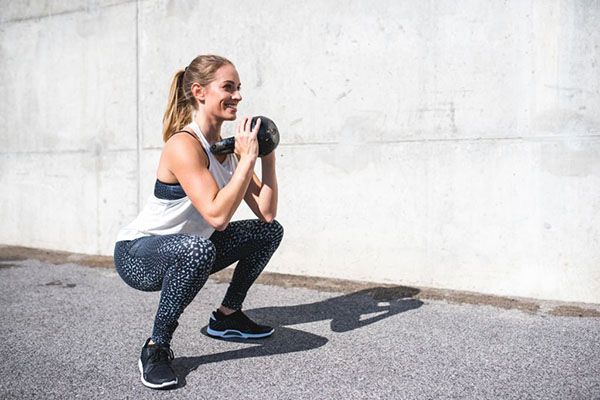Welcome back to the Healing Pain Podcast with MarySue Ingman, PT, DSc
It’s great to be here with you. Thanks for joining. In this episode, we are discussing a new assessment tool to guide behavior change, which is called The Physical Therapy Healthy Lifestyle Appraisal. It was developed by Dr. MarySue Ingman, who you will meet in a couple of moments. This is the first validated assessment tool for a physical therapy practice, where we can look at nutrition, physical activity, stress, sleep, and tobacco use. What I like and appreciate about this tool is that it’s quick, easy, fits well into physical therapist practice, and especially if you are using integrative or lifestyle medicine approaches to treat chronic pain or chronic disease management.
Let me share a little bit about our guest. Dr. MarySue Ingman is an Associate Professor in the Doctor of Physical Therapy Program at St. Catherine University in St. Paul, Minnesota. Her research interests include the role of a physical therapist, health promotion, and clinical practice. She’s published studies on motivational interviewing and the role of physical therapists in health promotion and wellness.
In this episode, you will learn a lot about counseling, assessment, and the science of behavior change. In fact, this episode is a sneak peek into some work that all of us have been working on for years. Some of you may know that I co-edited a textbook. That textbook is called Integrative and Lifestyle Medicine in Physical Therapy. My co-editor was another physical therapist, who you might know, whose name is Dr. Ginger Garner.
In that textbook, we invited about 40 physical therapy professionals, researchers, and educators, to contribute to this book on Integrative and Lifestyle Medicine in Physical Therapy. Chapter 3 in this textbook, which is called Coaching, Counseling, and the Science of Behavior Change, was written by MarySue and her colleague, Dr. Janet Bezner, a Professor in the Department of Physical Therapy at Texas State University.
That textbook is on track to come out soon. We are excited because we think that this will be useful for physical therapy educators, as well as clinicians who are using integrative and lifestyle medicine in physical therapy. As I mentioned, Chapter 3 is written by MarySue, where we go into Coaching, Counseling, and the Science of Behavior Change, which we will discuss in this episode. Without further ado, let’s begin and learn about the Physical Therapy Healthy Lifestyle Appraisal and meet Dr. MarySue Ingman.
—
Watch the episode here
Listen to the podcast here
Subscribe: iTunes | Android | RSS
How To Quickly And Easily Assess Lifestyle Behaviors In Physical Therapy With MarySue Ingman, PT, DSc
The Physical Therapy Healthy Lifestyle Appraisal: A New Assessment Tool to Guide Behavior Change
MarySue, thanks for joining me on this show.
Joe, thanks for inviting me. I’m happy to be here.
I’m excited to speak with you about the role of the physical therapist and evaluating and screening for healthy lifestyle behaviors. I know this has been a personal interest and a passion, and obviously, a lot of your research focuses on this area over the last couple of probably decades for you. We are going to specifically be talking about a paper that you wrote that everyone could find in the April 22 edition of Cardiopulmonary Physical Therapy Journal.
It’s a journal of cardiopulmonary physical therapy. The title of that paper is The Development and Application of The Physical Therapy Healthy Lifestyle Appraisal, A New Assessment Tool To Guide Behavior Change. It’s a mouthful right there. We are going to dive into all the different parts of that. A good place for us to start is why did you decide to develop this tool? A healthy lifestyle is something that we hear about every day on the zeitgeists but how does it relate to us as physical therapists? How can this tool help inform what we are doing each day as physical therapists?
That’s a good place to start. This has been a passion of mine the health promotion and wellness has for a number of years and particularly the development of a tool to help clinicians and educators have an introduction a way to start having conversations with patients about behavior change. The process of this tool began with my two co-authors, Dr. Janet Bezner and Dr. Beth Black.
We have been for the last several years have had the opportunity to teach PT’s role in health promotion and wellness to PTs and PTAs across the country in a lot of different venues. Helping them recognize what’s within our scope of practice in health promotion and wellness, what behaviors should we be talking to our patients about? How to have those conversations, books, and theories of behavioral change and motivational interviewing?
I felt like we had a good impact and a strong impact on bringing the importance of this to our PT colleagues. We recognized that what was missing was a brief, quick, simple tool that would allow clinicians to be able to find out from their patients what they are doing with their behavior, how important it is for them to change that behavior, and how confident they are in making those changes.
That’s what we developed is this Physical Therapy Healthy Lifestyle Appraisal or PTHLA. It has been exciting and new. There is nothing like this out there, you would think because it is so simple and easy to use. Why wasn’t this around before? It’s taken us a while to get there. The process of being able to validate a tool takes some time and rigor, and doing it correctly so that we have a valid and reliable tool. That’s what we have now. We are excited to be able to share this with other people.
It’s a nice evolution. I know Janet Bezner started some earlier work in identifying the importance of health and wellness promotion in PT practice or our scope as professionals. From there, obviously, the paper has developed and the books. Clinicians are asking questions now, “What can I do? How can I do this?” It is interesting to me that you mentioned earlier that the process that many professionals go through first is, “Can I do this.”
Where your tool comes in once they check off that box, “Yes, I can do this,” is how do I start to have this conversation with my patients? How do I breach this topic with my patients? Maybe you can talk about the importance of that. It’s like, “I’m going to tell patients about how to optimize their sleep.” That may not be the best approach for healthy behavior change.
That is the most important thing, and I believe I mentioned to you when we first met, was that I’m retiring from academia after a 31-year history in PT and PTA education. I feel like the creation of this tool has been the bow of my academic career. I am looking forward to continuing to do further study with this tool. I’m not done with that but it is the most exciting aspect of my work in research and my scholarship here in academia. It’s important to differentiate between I can tell my patient what to do. I’m the expert.
I know why it’s important to make behavioral lifestyle changes with regards to, say, not smoking or getting adequate sleep. It’s all about how we have those conversations with patients. If telling people not to do unhealthy behaviors and only do healthy behaviors worked by just telling them, we wouldn’t have an obesity epidemic or chronic disease, so clearly, that doesn’t work.

We need a different approach. Both Janet Bezner and I have gone through health and wellness coaching training to learn how to have conversations with patients. It’s about listening to them and letting them provide their own guidance because nobody knows yourself better than yourself. It’s about listening to them and then asking questions to help them think about all the reasons why they should change.
I have missed what your question was originally. I’m clearly very passionate about this, and I tell this to my students all the time, to me, this is the most important thing in being a qualified and effective physical therapist. You can have the best hands-on skills and know the best evidence behind your interventions but if you can’t communicate it and listen to your patients about what’s important to them, none of that is going to matter. I hate the term soft skills but that is, in my opinion, the meat of our profession and being an effective clinician.
I would like to go into the specifics of the assessment and go through all the different parts. Maybe speak about different components under each category there. Before we do that, I want to make sure we acknowledge that you were part of the team that you led. Oftentimes, when we read things in the literature, it looks like, “This is like a five-page form with maybe ten questions.” It’s simple and easy. No stress is involved in this but it gives us an idea of the process you and the team went through to develop this PT healthy lifestyle appraisal form.
I can remember distinctly the three of us sitting in Dr. Bezner’s office in Texas saying, “What do we want to ask?” We started with what health behaviors a PT should be addressing with their patients. We didn’t have to arrive at that on our own. There was a well-documented publication led by Elizabeth Dean and her team on the outcome of the Second Annual PT Summit of Global Health. That was 2011 or maybe even before that.
In that paper, there are recommendations for the health behaviors that a PT should be addressing with their patients. It’s given as part of all PT evaluations. We started with identifying the behaviors. What we did is our goal was to have the most simple, basic tool. We wanted to use visual analog scales ideally. What our hope was that we would arrive at a tool that has visual analog scales to quickly assess the stage of change or readiness to change importance and confidence. What we did with the confidence is we compared validated confidence surveys. Some of them were as many as twenty questions long that pertained to each of the health behaviors that we were studying.
We use patients who were patients in outpatient orthopedic clinics through different three different areas across the country. The original survey was 118 questions because we were asking them these validated self-confidence questions and having them also rate that using the ruler. We did the same thing with the stage of change, using the standard validated questions about stages of change or readiness to change and comparing those to a ruler.
It took two iterations to get there. Eventually, we came up with this eighteen-item survey in that we were able to use a three-item stage of change question and two 11-point visual analog scales to measure confidence and importance. It was a process of we did pre-post-tests with the patients in the clinic. We asked them to fill out the survey on day one, which was at any point in their PT episode of care.
Within about seven days later, we asked them to fill out the exact same questionnaire knowing that their behavior likely didn’t change in those 2 to 7 days. Are they answering the questions the same way to test reliability? With a lot of statistical magic, we came up and were able to make the determination that these eighteen items led to this exciting, new survey or questionnaire that would allow practitioners to learn about their patients’ health and wellness or healthy lifestyle, I guess.
You went from 118 questions and chunked it down to 18, which is important because we know that patients become fatigued if they have too many forms to fill out. Sometimes, someone’s cognitive awareness or ability can be a challenge if there are too many questions or too in-depth questions. That’s why I like this because it’s simple, easy, and short. When practitioners hear that, they are like, “I will use that.” When you have questionnaires and self-report measures that start to go beyond probably the 30-question range, they are not clinically applicable, but this is.
Thinking about the clinician, the PT needs to read that and look at those patients’ responses and make sense of that because each of the six behaviors follows the same pattern. I will talk about how I think the best way that this could be utilized within clinical practice.
Let’s dive into it a little bit. In the big picture, tell us the six behaviors.
The six behaviors are physical activity, and we broke that down into both aerobic activity and strengthening. Do we use governmental standards for what do we mean by that? It’s 150 minutes of moderate activity over the course of a week and strengthening twice a week for most major muscle groups. Two of the behaviors related to physical activity are strength and aerobic. We use smoking as our terminology. We had some conversations should we look at tobacco use and include eCigarettes.

At the time we were developing this, CDC didn’t have a strong recommendation on eCigarettes yet as far as is there any safe amounts? We went by smoking. Obviously, the governmental recommendation of that is don’t. The healthy eating for that we have in the questionnaire, the PTHLA, defines what we mean by healthy eating. In that, we had, at the time, the governmental recommendations, which is what a healthy diet consists of. It’s five bullets listed. It’s very general.
In sleep and stress management, we are not measuring the number of hours of sleep. We define healthy sleep as 7 to 9 hours for adults, per the sleep associations recommendation. What we are looking at is the behaviors that people are performing that can lead to healthy sleep practice. It’s very behaviorally based on what are you doing. Strengthening, moderate physical activity for 150 minutes, smoking, sleep, health and stress management, and healthy eating are the six.
Let’s take one as an example so people have an idea of what this looks like and how it works. Can we start maybe with healthy eating?
Sure.
A good place is probably to read to us what the definition of healthy eating is in this self-assessment tool.
That’s a good place to start. A healthy eating pattern is defined as eating the following foods regularly, vegetables, a variety of colors and types, fruits, especially whole fruits, grains, especially whole grains, protein such as lean meats, poultry, eggs, beans, and nuts, healthy oils such as olive and canola, and limiting consumptions of saturated fats and trans fats, and added sugars and sodium. It’s basic.
I hear from students and clinicians, “I can’t talk about nutrition with my patients because that’s out of my scope of practice. I can’t prescribe diets.” Clearly, as you read this definition, that’s not what we are doing. We are looking at helping them see what is meant by healthy eating. Eat vegetables. You choose. Just do a variety. That’s the definition.
These were obviously the steppingstones. As PTs become well-versed in nutrition, they can begin to recommend different types of healthy eating patterns and dietary approaches. These are good, solid foundational recommendations and conversation openers to have with patients.
Exactly. The whole point of the PTHLA is to make it a conversation starter. If you have the patient fill this out and you take the time to look at it, it’s putting the door ajar of beginning to enter into that conversation. If healthy eating is their primary interest and the healthy behavior that they are most interested in exploring, then we dive deeper into that.
You identify the definition for the patient or client up top. You have three questions below that to assess what it seems like, to me, someone’s readiness and where they are behaviorally with that behavior. Can you go through those questions, so people get a good idea of how this works?
These are the same three questions across all six behaviors. It’s very easy, as the clinician, to be able to pop in and say, “I want to look at smoking or whatever.” The first question is the readiness to change as many people might probably know that typically stage of change, the transtheoretical model has five stages. In the development of this tool, we thought, “We are not doing this to look at outcome over time.” We didn’t need to be as specific as those five. We consolidated those into three stages of change.
Question one reads, “Select the one statement below that best describes your typical eating pattern as defined above.” Option A is, “I am following a healthy eating pattern.” B is, “I’m thinking about or have started to follow a healthy eating pattern,” and C is, “I have no intention of following a healthy eating pattern.” If you are familiar with the stage of change, let’s start with C, I have no intention of following is pre-contemplation. B is people who are contemplating or have started to take some action, and C is that they are living and performing the lifestyle behavior.

Questions 2 and 3 are both eleven-point visual analog scale. Question 2 reads, “Please circle the number that reflects how important it is now for you to have a healthy eating pattern.” They circle a 0 to 10 on that. Three reads, “Please circle the number that reflects how confident you are now that you can have a healthy eating pattern.” To me, the most important question for a clinician would be looking at the importance.
If a patient responds that having a healthy eating pattern is a 9 out of 10 for importance, they are telling you that they want to do something about their eating. Maybe they don’t know-how. That’s the doors wide open for the PT or PTA to have a conversation about what we can talk about healthy eating? What is it? What more do you want to do with that? How do you define healthy eating as that type of thing? Maybe it’s answering questions that may be all it is. Maybe it’s like, “I love sugar or whatever. I don’t know how to cut my habit, my love of sugar.”
Questions 2 and 3 are both important. Obviously, the importance tells you as a practitioner, “This may or may not be a critical part of my plan of care and be something valuable or something the patient or a client sees as valuable to optimize their health and wellbeing. The confidence ruler, which is Question 3, and again, each of the healthy lifestyle behaviors have this confidence ruler, does that start to point us toward someone’s self-efficacy with regard to the certain behavior in their life?
That’s exactly it. The literature supports that self-efficacy is one of the strongest predictors of initiating healthy behaviors and sustaining healthy behaviors. You may be highly self-efficacious in one health behavior of, for example, I never eat sugar. It’s my pattern, my habit. It’s habitual but regular exercise, I might feel uncomfortable with that or lack self-efficacy in that area. Self-efficacy is behavioral-dependent.
The way to help somebody improve their self-efficacy or confidence is by setting appropriate goals for them and getting this sense of accomplishment because confidence builds upon itself. Being able to look at your plan of care developing maybe some goals around healthy eating and might be the small baby steps along the way.
Within this tool, there are physical activity, stress management, and sleep. You mentioned you break down the physical activity into aerobic and strengthening, which is great, especially for PT practice. There’s this section on tobacco use. Rose Pignataro, who’s a physical therapist and a PT educator, wrote the chapter on Substance use or misuse in the textbook, Integrative and Lifestyle Medicine in Physical Therapy. A lot of her PhD work has focused on tobacco use and other substance misuse conditions.
Before we go into tobacco use, which is an important topic, and I want to discuss it, I want to play devil’s advocate for a minute. Maybe in the evolution of this tool, would you see this category maybe being built out into substance use or misuse around things like opioids or other things that we are seeing in practice that are important for physical therapy outcomes?
Whether it’s added to the use of chemical use may be or if it’s a separate category in itself. That’s the beauty of this tool is if there are other lifestyle behaviors following this pattern of questioning, it can be used for any behavior. That’s a great question. There is an opportunity to expand the use of this tool, especially opioid use. It’s new thinking for me. That was wonderful.
Rose is an advocate for physical therapists helping people with tobacco cessation. It’s having a role in that area.
I do think that it’s important to have information available. If you begin to have a conversation with a patient or client about ending their use of cigarettes, say cigarette smoking, and they express an interest in that, you need to be prepared for how to either refer them or what resources to provide them with. As clinicians, obviously, we are well versed. We can talk about this collectivity.
Even sleep, I feel like it is for many practitioners in the area of comfort, stress management, and maybe a little less so healthy eating. Smoking is probably the least, in my opinion, whereas we, as PTs, are probably the least confident. I know as a DPT educator, not something that we spend a lot of time teaching our students about what we know about substituting and other medications to help in the transition of stopping smoking.
Let’s go into the tobacco use section of this tool. What’s the first question up there that the patient would relapse?

To start, tobacco use is defined as the use of any tobacco product, including cigarettes, cigars, chewing tobacco, snuff or pipe tobacco. Question one is, “Select the one statement below that best describes your tobacco use,” A) Being I don’t currently use, B) I’m thinking about or have quit using tobacco, and, C) I have no intention of quitting tobacco. C being a pre contemplator, they are just not ready but that doesn’t mean that they might not be ready at some other point. B being, I’m in this fence-sitting place.
They are the ambivalent folk, the best and most prime for having a conversation about behavioral change. The, “I am doing it,” the maintainers, still there’s an opportunity because relapse can happen at any stage of change, life circumstances, living in a pandemic for three years. There are a lot of things that can impact our sustainability with healthy behaviors.
Even if a patient says, “I’ve got using tobacco or I’m currently eating a healthy lifestyle,” that doesn’t mean that it might not change in our episode of care with them, perhaps. They are saying two follow-up questions of 0 to 10. “How important is it for you not to use tobacco? How confident are you that you can refrain from using tobacco?”
There’s always that importance ruler and the confidence ruler that are below those assessments there. Who should use this? Should we use this with every single patient as part of our evaluation?
The who are clinicians clearly and educators. There’s a great opportunity for educators who teach prevention, health promotion, and wellness within, either a PTA curriculum or a DPT curriculum to help educate or provide students with a tool that is so easy to use in their clinical experiences and clinical practice. With how often and who, our study was validated in outpatient orthopedic settings. We think we did that because of the frequency of visits and within an episode of care typically.
Outpatient orthopedics lends itself nicely to being able to have that ongoing relationship and time to have these discussions. I don’t think it is unreasonable to consider using this in even acute care or subacute setting because of its ease and use, and practicality. It provides the condition with maybe a window into an aspect of the patient’s lifestyle that we may not traditionally get through our typical subjective interviews, intake questionnaires or outcome measures that we use.
In any clinical practice, it has the potential, pediatrics probably not, adult practices, and in education too. It’s titled the Physical Therapy Healthy Lifestyle Appraisal. You could take off the words “physical therapist” there. I was definitely going to share this with my primary care physician. I’m like, “This might be something you might want to use to ask your patients about,” because it’s so easy and simple to use.
If I’m a physical therapist and I provide this to the patient, the patient fills it out, let’s take tobacco use. For example, they circle C, which is, “I have no intention to quit using tobacco.” Should I, as a professional, box it up and put it on top of the shelf and say, “This person is not ready. I’m not going to talk about this and leave it and not come back to it.”
I wouldn’t recommend that. The pre-contemplation, those that say, “I’m not ready or have no intention,” sometimes the initial thought of the practitioner is they are a lost cause. They will never change. There was a lot of literature to support that, especially with smoking, those who have successfully quit smoking, oftentimes the frequency of conversations by trusted healthcare practitioners has an impact on the likelihood that one will change their healthy behaviors, particularly with smoking.
Having that conversation is about how you have that conversation. It’s a trusting healthcare professional who approaches it in a non-judgmental, “It’s your decision,” way and comes back to it. If I am a physical therapist and maybe I’m seeing this patient maybe every six months or every year, this person has some musculoskeletal injury that they come to see me with, I would ask that every time.
I was like, “Six months ago, Joe, you said you weren’t quite ready to quit smoking. I’m wondering how you are feeling about that now.” Maybe they are like, “I can’t” versus “I won’t,” a pre contemplator. The, “I can’t” is too big of a hurdle. If you could tease that out, it might be through, “Did you know that there are some medications? Did you know that there are a lot more medications that can help with this process?” versus the “I won’t,” which again are not a lost cause. They are just not ready now. You are looking at readiness to change as a continuum. At any point, you might move along that continuum.
This can be part of a conversation, let’s say, in follow-up treatment sessions or you can reinsert it into a reevaluation process if it’s part of that. MarySue, you are going to, fortunately, and unfortunately, retire from our great profession. When I read papers like this and talk about integrative and lifestyle management, we need a hundred more of you in our profession. I know you are not exiting completely but as you start to sunset and if you had a magic wand to wave, how would you like to utilize the physical therapy healthy lifestyle appraisal in our profession?

I love it. My colleagues, Beth and Janet, would agree with me on this is that we would like this to be a part of every initial examination that becomes as important as asking about rating pain. This is something that is implemented into other standard outcome measures that are part of the medical record or your intake subjective history. From that, the results of this can’t just sit in a chart, the clinician practitioner would look at that. I would recommend that they begin to look at the important scale and anything that is highly important.
Regardless of their stage of change, of question one where they are on the stage of change, and maybe even regardless of their confidence is, if it’s important to you, I will explore that so much as like, “Tell me why it’s important to you,” and tease that out. You will learn a lot about why it’s important. I always think starting from a place of curiosity is the best place when we work on behavioral change as it helps me as the clinician to stay away from being judgmental and exploring it from a beginner’s mind.
I tell this story about a family member who smokes. I have never smoked cigarettes and asked my family member one time, “Tell me what you enjoy about smoking.” I honestly don’t know. I learned a ton about what that did for their confidence and ability to have self-esteem. It was very interesting. Coming at it from a place of curiosity can be important.
That’s what the important question can help. If you see a discrepancy, “It’s highly important but my confidence is low,” it’s ripe for having a coaching conversation using some motivational interviewing and empathetic listening to be able to bridge that gap between building the confidence to match how important it is.
When I read this, I see a fair amount of show decision-making that happens with this tool, which is important. It’s also important for us as professionals to realize that we are not perfect in these categories. All of us struggle with healthy lifestyle behaviors and even addiction, not just tobacco. We are all addicted to something in life here, food, sugar, cell phone or Netflix. I always feel like applying it to yourself first, maybe someone you feel comfortable with, and you will be ready to use it obviously.
I’m with you. It should be used in every single physical therapy evaluation, probably across most of our disciplines. There are some uses for it. MarySue, it has been great speaking with you. We are going to point people to that paper. People want to learn more about you and your work, keep up on it or if they want a copy of this tool, how can they reach out to you?
I’m old-fashioned but email would be the best way to reach out to me. You can get the article in the April Physical Therapy Cardiopulmonary Journal. My email address is there. If you email me, I will get you a copy of the PTHLA for your use. It’s very available to use at no cost. My email address is MSIngman@StKate.edu. I’m super excited and thrilled that this tool is available for clinicians. The ease of its use you will find appealing and easy to use.
I do believe that it will increase that therapeutic alliance between you and your patients. By asking them to fill it out, you are communicating to your patients that you care about these behaviors. It’s important enough for you to ask about it, and now you want to help them maintain the most healthy lifestyle that they can have, not only to achieve their PT goals but to live as human beings in society.
Those can be found on the webpage at the Integrative Pain Science Institute. If you can’t find that, send me an email or reach out to me on social media, and I will make the connection so that you can have that information. If you are reading this and are a physical therapist, excited about a healthy lifestyle and ways to evaluate and intervene with effective behavior change, take a screenshot of this episode and tag me on Instagram, @DrJoeTatta. I will be sure to tag you back. We will see you next time.
Important Links
- St. Catherine University
- The Physical Therapy Healthy Lifestyle Appraisal
- Integrative and Lifestyle Medicine in Physical Therapy
- The Development and Application of The Physical Therapy Healthy Lifestyle Appraisal, A New Assessment Tool To Guide Behavior Change
- Texas State University
- MSIngman@StKate.edu
- @DrJoeTatta
About MarySue Ingman, PT, DSc
 MarySue Ingman, PT, DSc is an Associate Professor in the Doctor of Physical Therapy Program at St Catherine University in St. Paul, MN. Her physical therapy Bachelor’s Degree as well as her Master of Science Degree are from the University of Minnesota.
MarySue Ingman, PT, DSc is an Associate Professor in the Doctor of Physical Therapy Program at St Catherine University in St. Paul, MN. Her physical therapy Bachelor’s Degree as well as her Master of Science Degree are from the University of Minnesota.
She received her Doctor of Science degree in Health Promotion and Wellness from Rocky Mountain University of Health Professions. She completed training as a Health and Wellness Coach through Wellcoaches®. Her research interests include the role of physical therapists in health promotion in clinical practice.
She has published studies on motivational interviewing and the role of PTs in health promotion and wellness and has co-authored a textbook chapter on coaching for health behavior change. She has taught courses locally and nationally in health and wellness, motivational interviewing and PTs role as health coaches.
